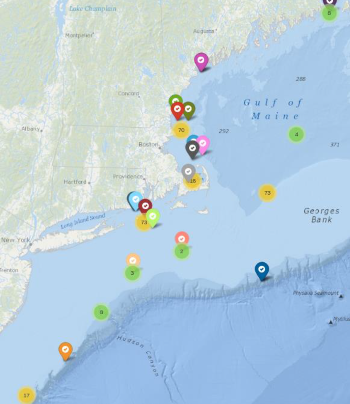
Specific details:
- Upgrade the Deck Box: The Deck Box is the “brains” of the system and is the most critical component. It resides in the wheelhouse of the fishing boat and collects data from sensors, displays it for fishers and relays it to the internet (ultimately to IOOS servers). The first priority is a re-design of the deck box with an emphasis on robustness, reliability and reduced support.
- Add Current Measurements: Tilt Current Meters (TCMs) have been deployed successfully by fishers in the last few years (McElroy et. al. 2019). The meters can be attached to a wide variety of fixed fishing gear at both the surface and on the bottom.
- Add Dissolved Oxygen Measurements: The project intends to add an off-the-shelf optical dissolved oxygen (DO) sensor to the system to be used in locations where hypoxia is a concern.
- Improved Ship-to-Shore Communications: The project will add two new communications packages to the Deck Box: a 4G cellular modem (for smaller vessels that operate close to shore) and an Iridium satellite modem (for vessels that take multi-day trips over the horizon).
Funding:
- Year 1: $385,372
- Year 2: $396,906
- Total: $782,278
Partners:
Gulf of Maine Lobster Foundation
 Official websites use .gov
A .gov website belongs to an official government organization in the United States.
Official websites use .gov
A .gov website belongs to an official government organization in the United States.
 Secure .gov websites use HTTPS
A lock or https:// means you’ve safely connected to the .gov website. Share sensitive information only on official, secure websites.
Secure .gov websites use HTTPS
A lock or https:// means you’ve safely connected to the .gov website. Share sensitive information only on official, secure websites.
